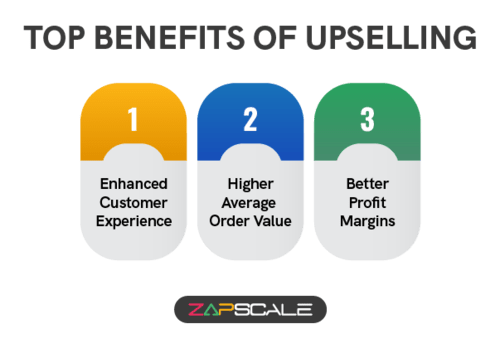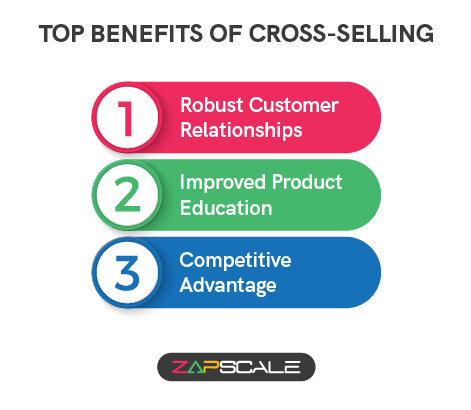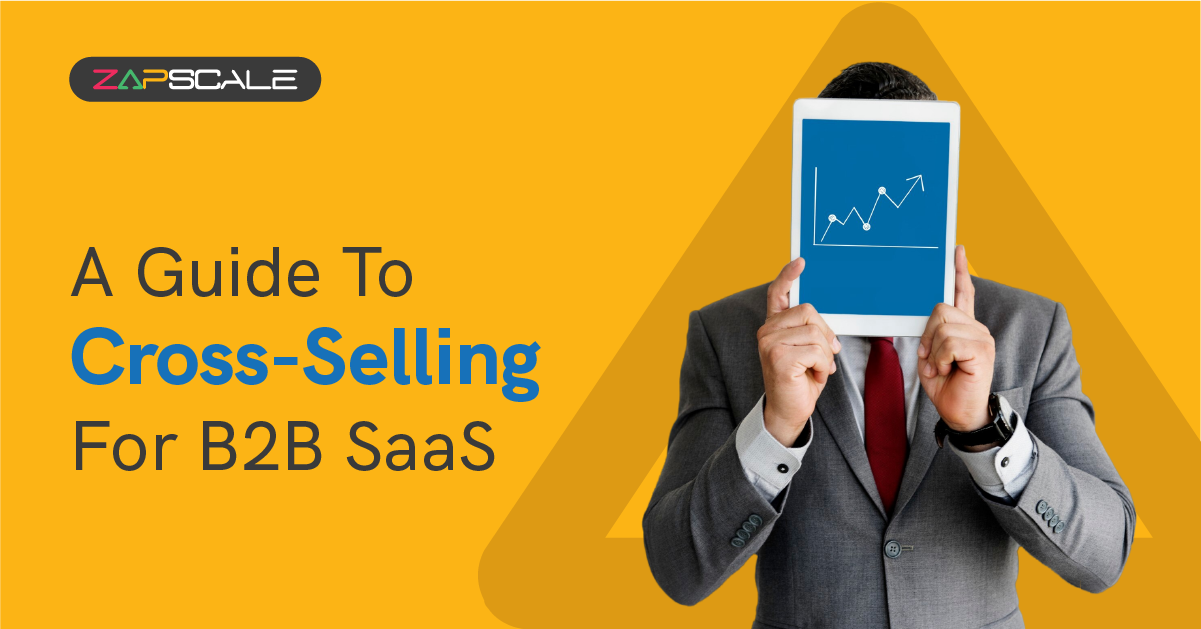CATEGORY > Customer Expansion
Upselling V/S Cross-Selling-What Is The Difference?

Introduction
What matters the most in Sales? Of course, it’s selling more!
Upselling and cross-selling are popular sales techniques every successful business must follow to earn additional bucks.
Even though both these strategies are an excellent way to achieve optimal business development, companies should be mindful of which technique to use based on the specific situation and customer needs.
To learn more about cross-sell vs upsell, continue reading further.
Upselling - The Art Of Driving Premium Upgrades
Upselling is a sales approach that encourages customers to purchase a more expensive version of a product or service.
It entails providing upgrades or premium choices that augment the initial purchase.
This strategy not only increases revenue but also boosts customer happiness by providing more value.
For instance, we often find cashiers at fast food joints telling us to upgrade our regular meals to a larger size or include add-ons such as premium toppings or desserts for an improved dining experience and increased order value.

1. Enhanced Customer Experience
Offering premium upgrades allows customers to have a more personalized and pleasing experience, giving them the impression that they are getting more value for their money.
2. Higher Average Order Value
Upselling increases the average amount spent by each customer to boost overall sales and revenue.
3. Better Profit Margins
Premium upgrades and add-ons are often associated with higher profit margins. Upselling these options can increase the business's profit per sale, resulting in improved financial performance.
What Is Cross-Selling?
Cross-selling entails recommending additional, complementary products or services to supplement a customer's initial purchase.
It seeks to improve the customer experience by offering solutions that address their requirements at the macro level.
For instance, in a fast food restaurant, we often get asked to add a side dish like onion rings or fries and even beverages such as milkshake or coke to complete the meal.
They do this for our convenience and comfort as well as improving the order value.

1. Robust Customer Relationships
Cross-selling promotes stronger connections with customers by displaying an awareness of their requirements. Offering relevant products demonstrates that the company is cognizant and dedicated to meeting customer needs.
2. Improved Product Education
With cross-selling, firms can educate customers about the additional features and benefits of complementary products. This knowledge can lead to more educated purchasing decisions and increased customer happiness.
3. Competitive Advantage
Cross-selling can effectively separate a company from its competitors by providing a broader range of products and services. This competitive advantage can assist the company in attracting fresh customers and stand out in the market.
Upselling V/S Cross-Selling
Cross-sell vs upsell, what to opt for?
Here are some differences between these two to help you make the right choice.
1. Objective
a. Upselling
Encourages customers to buy a pricey version of a product or service.
b. Cross-Selling
Seeks to provide complementary products or services to customers.
2. Customer Journey
a. Upselling
Generally utilized when a customer is already in the purchasing process and seeking upgrades.
b. Cross-Selling
Used to introduce new products or services to customers throughout their lifetime.
3. Sales Strategy
a. Upselling
Ideal for customers who are already engaged and in search of premium solutions.
b. Cross-Selling
Excellent for customers who may benefit from additional offerings that supplement their previous purchase.
4. Pricing Strategy
a. Upselling
Focuses on pricing tactics for premium versions, such as discounts or incentives for upgrades.
b. Cross-Selling
Promotes bundled pricing or discounts on extra products when purchased together.
5. Impact
a. Upselling
This might result in better customer satisfaction if the upgrade considerably improves the overall customer experience.
b. Cross-Selling
Can strengthen customer relationships by providing a complete range of solutions, resulting in enhanced customer loyalty.
How To Perfect Upselling For Top-Tier Sales Success?
Let’s stop the fight between upselling and cross-selling and throw some light on how you can maximize both to achieve greater sales numbers.
1. Understand Customer Demands & Prefernces
To upsell like a pro, you must understand what your customers genuinely need.
Engage with your customers via surveys and interviews while scanning usage data to understand their pain points and priorities.
This enables you to recommend upgrades that are relevant to their needs and add actual value.
For example, if a customer frequently uses only basic features of a product, they may profit from advanced functionality, increasing their likelihood of appreciating and investing in an upgraded version.
2. Share Tailored Offers
Upsell recommendations become more relevant when they are tailored to specific customers' data and usage behaviors.

Use data from customer interactions and purchasing history to recommend updates that meet their requirements.
A targeted offer, such as offering a more robust plan to a regular user, demonstrates that you understand their specific needs and increases the chances of a successful upsell.
3. Emphasize The Value Proposition
When offering an upsell, ensure to communicate the premium option's benefits and added value.
Describe how the upgrade enhances performance, efficiency, or the overall experience.
For example, if you provide a more complex software package, explain how the expanded functionality would solve certain problems or make tasks easier. This technique allows customers to see the actual benefits, making the upgrade more desirable.
4. Choose The Right Moment
In upselling, timing is everything!
Present upsell opportunities at significant points when customers are most attentive.
This could occur throughout the checkout process, renewal periods, or after a positive encounter with your product.
For example, giving an upgrade at the moment of purchase when the buyer has already committed can be more effective than waiting until later stages. Proper timing makes the upsell feel natural and relevant.
5. Implement Clear Pricing Structures
Ensure that upgrade pricing is transparent and easy to grasp.
While upselling, avoid hidden costs and complex pricing methods that may confuse your customers. Instead, follow a simple and transparent price structure to let buyers make intelligent choices.
Doing so will lead to a better rate of acceptance for upsell offers because in this way they can easily perceive the benefits vs the costs.
How To Perfect Cross-Selling For Top-Tier Sales Success?
1. Identify Complementary Products
To cross-sell effectively, identify products or services that naturally complement what the customer is already purchasing.
Analyze customer behavior and purchase history to determine which items are frequently bought together.
For instance, if a customer buys a laptop, offering accessories like a laptop bag or software can enhance their overall experience and meet additional needs.
2. Offer Bundled Products
Offer bundled packages with complementary products at a discounted price.
Bundling gives customers a perceived better value, which motivates them to buy more.
3. Personalize Cross-Sell Recommendations
Use customer data to tailor cross-sell offers based on their current purchase and preferences. Personalized recommendations demonstrate that you understand the customer's requirements and can offer solutions that effectively add value.
4. Ensure Quality And Relevance
You must always offer only those cross-sell products that are high-quality and truly relevant to the customer's needs. Providing valuable and well-chosen recommendations fosters trust and suggests that you are committed to improving their experience rather than simply filling your pockets.
How To Empower Your Team Team To Sell More?
The cross-sell vs upsell debate is incomplete without telling you how your sales team can make the most of these techniques. Let’s find out how you can encourage your team to sell more and more!
1. Establish Clear Goals And Incentives
Define specific targets for upselling and cross-selling, and connect them to performance incentives such as bonuses or commissions. This pushes your team to explore and successfully implement these sales techniques.
2. Conduct Comprehensive Training
Provide extensive training in upselling and cross-selling, with a focus on customer requirements and communication. Encourage ongoing learning by offering advanced courses and workshops to keep sales employees proficient and adaptable.
3. Evaluate Performance And Share Feedback
Regular feedback allows employees to improve their tactics and strategies for better results. Monitor the success of your team's upselling and cross-selling activities and offer constructive feedback. Analyze which approaches are effective and where improvements are required.
Examples Of Upselling v/s Cross-Selling To Follow
1. Amazon
Excels at cross-selling by utilizing algorithms to recommend relevant and frequently purchased products, influencing customers' purchasing behavior and improving their shopping experience.
2. IKEA
Promotes cross-selling by recommending matching furniture pieces, allowing buyers to furnish their homes effortlessly and affordably.
3. Spotify
Fosters upsells by offering only two options (free and premium), with features compared side by side to let users make an informed choice.
FAQs
1. When should I upsell?
Upsell when the customer is already interested in your product or service and ready for an advanced or premium version of the same.
2. when should I cross-sell?
Cross-sell when complementary products enhance the purchase, ideally during the buying process or after the initial sale.
3. Can I upsell and cross-sell simultaneously?
Yes, you can upsell and cross-sell together by encouraging customers to upgrade plans and recommending complementary products.
ABOUT THE AUTHOR
Popular from Customer Expansion
Quality Content,
Straight To Your Inbox!
Subscribe for the latest blogs, podcasts, webinars, and events!

Write a Blog
If you have experience in CS and
a flair for writing, we’d love to
feature you.
Write to us on
hello@zapscale.com





